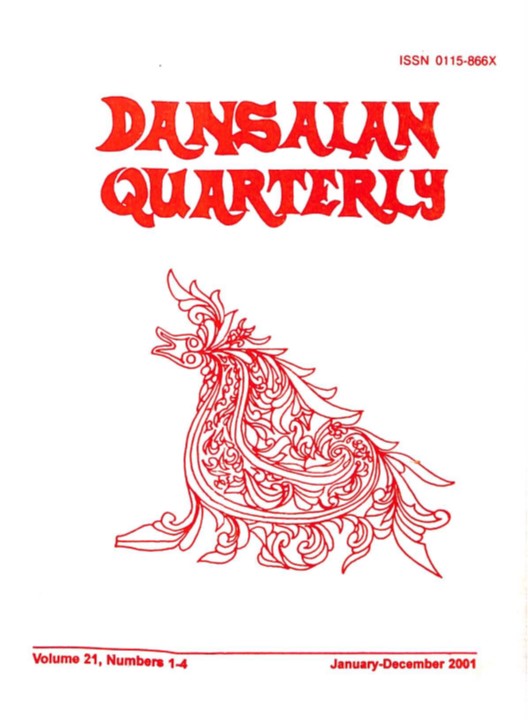January-December 2001 Vol. 21, No. 1-4
10 July 2022 Dansalan Quarterly
The six research papers in this issue share the objective of navigating through the intricacies of war, struggle, conflict, and resistance in the context of Moro communities. The first paper investigates the defiance undertaken by the Moros around the Iliana Bay and its vicinity against American presence in their territories. The author notes how their resistance opposed not only the Americans and the Spaniards, but also Filipino revolutionists that sought to grab power after the withdrawal of the Spanish garrisons in their controlled territory. The second paper explores American-Moro encounters during the time of American occupation. It probes into how their vastly different cultures and religions intertwined in a time of war and struggle. The third paper shares tales of the valor of Lumads and Moros in the Filipino-American war in Northern Mindanao. It provides a new perspective to the often-elitist historical perspectives, as this topic is centers on the marginalized Filipinos who probably shed as much blood as those who are more often portrayed in historical accounts. The fourth paper delves into the two native resistances against colonial rule at the close of the 19th century: the Moro struggle against the Spanish colonial government and the Philippine revolution with its roots in Luzon. While there are some scholars who think that these resistances mutually reinforced each other in an indirect manner, it must be noted that the internal struggle against colonization failed to converge. The fifth paper inquires the meaning, descriptions, and purposes of cotta, or fort. The presence of cotta implies the problem of peace and order, as cottas were primarily built for conflicts and defense against colonizers. The author also briefly details the Commonwealth order which ultimately led to the destruction of cottas. While it was successful, it remains pertinent to note that conflict was not altogether eliminated. The sixth and last paper surveys the policies implemented by the Quezon administration for the Muslims in a time of much struggle and resistance. The Commonwealth period was the last phase of American rule in the Philippines, thus the government wanted to integrate Muslims by reducing causes of conflict between Christians and Muslims. It provides a lengthy review of the many policies designed to mitigate certain issues such as the settlement program, social justice and welfare services, educational services and religious toleration, among others.
Please email dansalan.quarterly@dcfi.edu.ph to request a copy of the issue.

